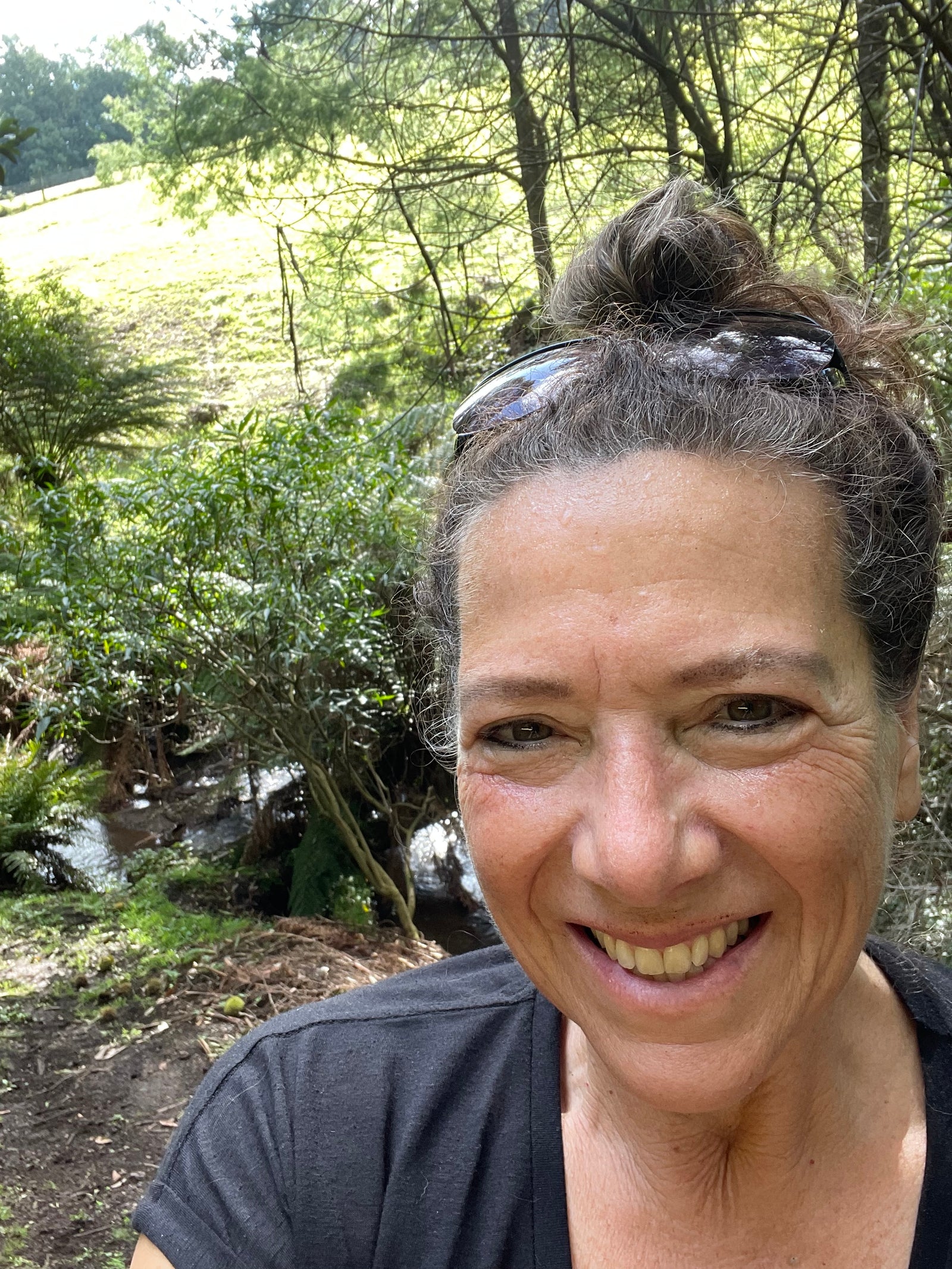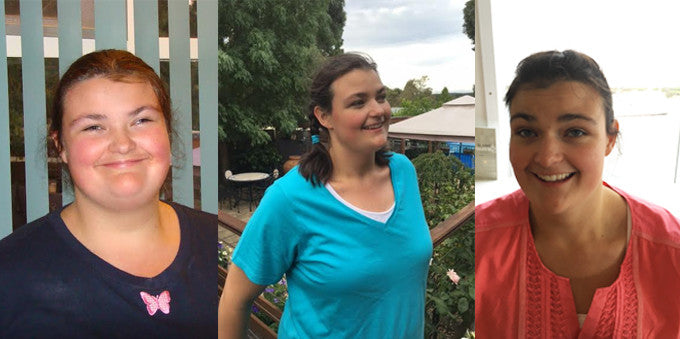After being first diagnosed with Hashimoto’s disease in 2001, Samantha Hoareau was relieved to put a name to the collection of symptoms that had been plaguing her life. But juggling medication, professionals and treatment plans remains an ongoing process – here’s how she’s managing her wellbeing while dealing with a lesser-known, highly underdiagnosed condition.
57-year-old Samantha’s symptoms started early in life, though it wasn’t until nearly a year after the birth of her first child that she got that vital diagnosis.
“I experienced symptoms for a very long time, dating back to my childhood, with some of those being very shy, quiet, teary, having brain fog, trouble learning and concentration issues,” Samantha says. “After the Birth of my first child I experienced additional symptoms such as yellow eyes, depression, unhappy at times, teary; it should have been wonderful time being a first time Mother, but it was a hard struggle not knowing what was wrong with me, and being told that I was suffering from post-natal depression, but I didn’t believe this was the cause.”

And the Aussie mum’s suspicions were spot on – but it wasn’t until she moved to Jannali and started seeing a new doctor that she started getting answers.
“All I got from the doctors is that you have post-natal depression, liver issue plus much more,” she says. “I started at a new clinic in Jannali when we first moved to the Suburb in 2001, and it was the local GP that really delved into my symptoms and thoroughly checked my medical history and recommended I have my thyroid checked as she believed I had a thyroid issue.
“After doing blood test, the results came back with a diagnosis of Hashimoto’s.”
After so many doctors had brushed off Samantha’s concerns, she says it was a relief to finally have someone willing to take a closer look her health, adding that she believes “regular blood tests to check thyroid levels as part of a standard Women’s health Check” would be a step in the right direction to tackle our massive underdiagnosis and delayed diagnosis problem with Hashimoto’s disease.
Women experience thyroid diseases in far greater numbers than men, with an estimated 1 in 8 women slated to develop a thyroid condition at some point in their lives – but many of these women will remain undiagnosed. An alarming study found in 2-5% of patients with abnormal thyroid-stimulating hormone levels (TSH), doctors didn’t follow up with further testing or a treatment plan. Now, that’s just for the patients who didn’t get a follow-up – the number is likely with misdiagnoses for other conditions. There’s around 850, 000 Aussies living with Hashimoto’s disease, affecting 7.5% of women and 1.5% of men – but, as we’ve uncovered, the true rates of the disease are far higher. This autoimmune disorder specifically affects the thyroid, and it comes about when our immune system targets this butterfly-shaped gland in our neck. Here's where the problem arises: this thyroid inflammation can result in a leak, which then leads to the overproduction of hormones – this is what’s known as hyperthyroidism – but with Hashimoto’s, we see a table-turning change over time. The thyroid eventually struggles to produce adequate levels of hormones, causing the development hypothyroidism, leading to a number of debilitating symptoms. Samantha says she experienced a range, from mental to physical health.
“I had brain fog, struggled with learning, concentrating, reading, memory loss, Mood swings would be teary, then cranky and angry,” she says. “My symptoms worsened after the birth of my first child and that’s where I knew something wasn’t right and that wasn’t myself and needed to get help and some answers.”
Samantha now juggles wholistic treatment methods with her prescribed medication, noting the balance can be difficult to strike.
“The biggest thing is making sure I have my medication daily and that the dosage levels are correct as these change frequently and medication alters based on these levels, balancing being tired when the thyroid is under active and being hyperactive when the thyroid is overactive,” she says. “I have included exercise into my daily routine and try and include a walk every day, I also try to drink more water, eat healthy, have reduced my dairy intake, and have gone to a gluten free and alcohol-free diet. I bought the book “I Quit Sugar” many years ago and have followed the guidelines to help me with foods, exercise, physical and mental health.”
Samantha says she’s also limited her intake of sugar – and for good reason. Too much of the sweet stuff can have several effects on thyroid function, and the relationship between sugar consumption and thyroid health is a complex one.

Here are some surprising ways in which excess sugar – particularly added sugar – can impact the thyroid:
- Blood Sugar Fluctuations: Consuming sugary foods or beverages can lead to rapid spikes and subsequent crashes in blood sugar levels. These fluctuations can stress the body and trigger the release of stress hormones like cortisol. Over time, chronic blood sugar instability can disrupt the delicate balance of thyroid hormones.
- Inflammation: Excessive sugar intake has been linked to chronic inflammation, which can affect thyroid function. Inflammation can disrupt the conversion of the inactive thyroid hormone T4 into the active form T3, potentially leading to hypothyroidism (underactive thyroid).
- Insulin Resistance: High sugar intake can contribute to insulin resistance, a condition in which cells become less responsive to insulin. Insulin resistance is associated with metabolic syndrome and an increased risk of hypothyroidism.
- Nutrient Depletion: A diet high in sugar can displace nutrient-rich foods, leading to deficiencies in essential nutrients like iodine, selenium, and zinc. These nutrients are vital for proper thyroid function.
- Thyroid Hormone Conversion: Sugar can affect the conversion of T4 to T3 hormones in the body. T4 is the inactive form of thyroid hormone, and it needs to be converted to T3, the active form, for proper thyroid function. High sugar intake can interfere with this conversion process.
“The most important and effective thing in my life must be my family, friends and the likeminded people that are around me to help, support me,” Samantha says.
Her advice for others going through the ringer with Hashimoto’s? Testing is key.
“Have a good GP, get bloods done regularly, make sure an endocrinologist understands you and is true to you as everyone’s symptoms are different,” she says. “I have struggled with this for majority of my life but now I am not scared or worried about people knowing what I’ve been through with being diagnosed with Hashimoto’s.
“Being comfortable to discuss the condition openly and honestly on your symptoms and how you’re feeling.”

Samantha says the lack of awareness around Hashimoto’s disease is particularly damaging, and it’s why self-advocacy is so important when it comes to getting that diagnosis.
“It is a silent auto immune disease and has similar symptoms to many other conditions and regularly goes undiagnosed,” she says. “People may look at you and say how good you look but inside you’re not, it’s difficult to balance your mental and physical health; Hashimoto’s is not a very well-known auto Immune disease, therefore when you advise people of your diagnosis there is a lack of empathy or understanding around the condition.”
Head on over to the Thyroid Foundation for more information on Hashimoto’s and other thyroid diseases and, as Samantha says, don’t be afraid to reach out for help. If a doctor won’t investigate your symptoms, find a new doctor who will.






I Quit Sugar
January 03, 2024
Thanks for commenting Kellie, so sorry to hear you’re going through this too! We hope that by sharing stories and experiences with autoimmune conditions, it may help make a change in people’s understanding of these conditions and our medical system’s response to people in need of support and proper treatment.